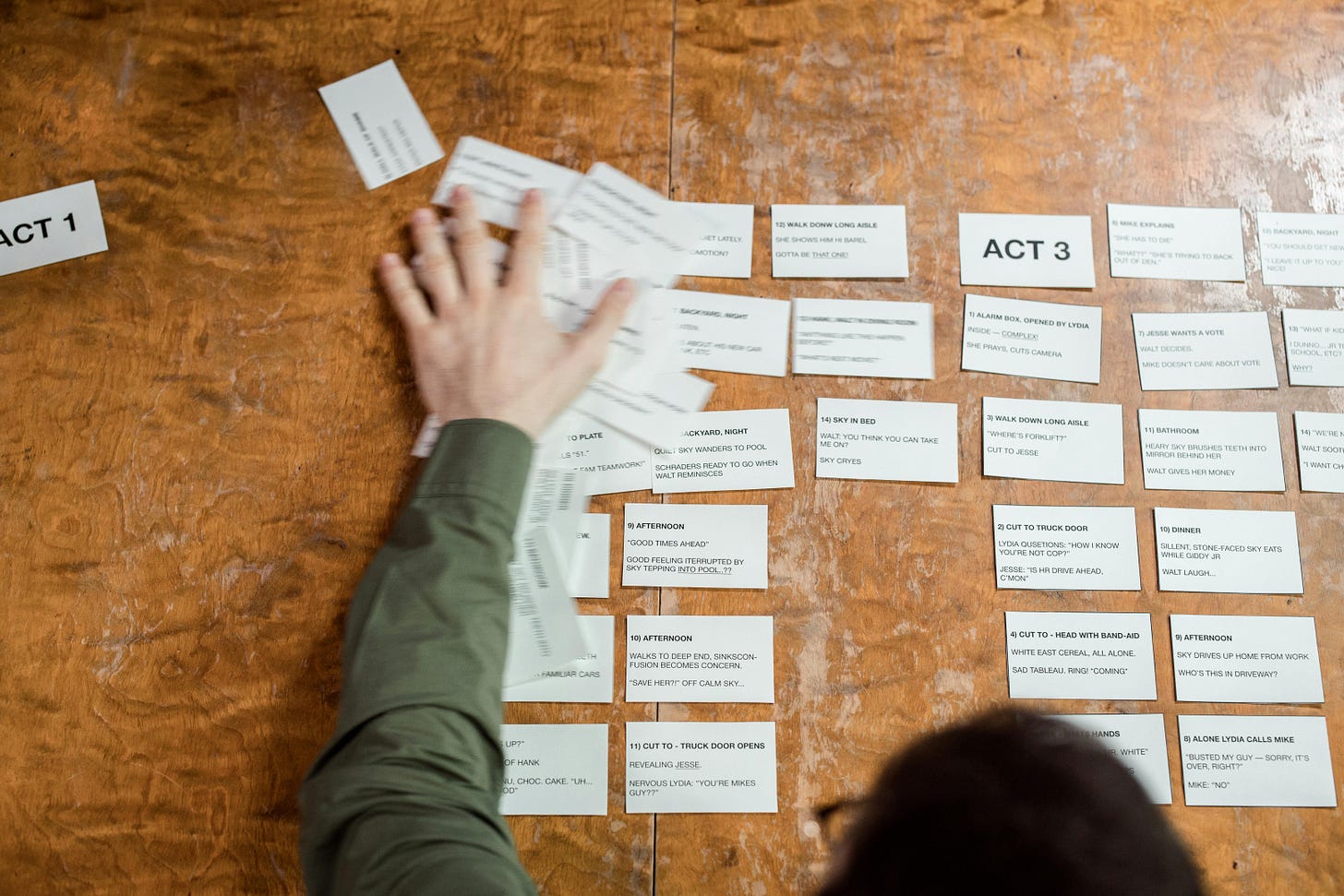The Four-Act Structure (Plotting Through Backstory #6)
Yeah, I know. I said we’d hit the hook this week. But I said that after I went on and on about how plotting is all about taking a big idea and cutting it into increasingly smaller chunks.
I need to follow my own advice.
Look, we cannot jump straight into the hook. We can’t. We cannot talk about the hook before we talk about acts!
It is, after all, the next logical step. We’ve looked at the book as a whole. We’ve figured out what the overall arc is going to be. Now, the first breaking-down-into-smaller chunks-step is to divide the book into acts.
I highly recommend a four-act structure over the three-act.
When I first started writing, I kept trying to work with the three-act structure, and it was a nightmare. Really.
Regardless of which plotting method you use for a three-act structure (Save the Cat, Snowflake, W-shape, etc.), the first act (the setup) ends at the 25% mark. That’s the call to adventure. (Or the first plot point.) We’ll discuss this more later. But it’s the point at which your main character is fully pulled into the plot. There’s no turning back.
The second act is—as you’d guess—the adventure. It’s everything that happens as the detective tries to figure out who committed the murder, or what happens to the couple in the romance as they grow closer (for example). It begins at the 25% mark. It continues to…
The third act. Which begins with that dark night of the soul moment—that ultimate moment of crisis, where all seems lost. The main character of the romance has lost their love. The main character of the fantasy has been defeated in battle. This occurs just before the big climactic moment. The third act begins at the 75% mark and continues to the end.
Did you see that? Did you see what that did to the middle of the book? If the first act is the first 25% of the book, and the last act is the last 25% of the book, the middle is 50% of your book.
What happened to me, inevitably, as I was working through a three-act structure, was that the 2nd act dragged. And wandered. And included unnecessary subplots.
So let’s take a closer look at the four-act structure.
When you’re working with a four-act structure, each act is 25% of the book:
Act 1 - Again, it’s the setup, ending with the main character being pulled into the adventure, journey, or mystery. There is no turning back. Ends at the 25% mark.
Act 2 - Here, your main character is really going to bumble. Maybe the detective gets caught up in red herrings. The two love interests in the romance do nothing but offend each other. But it’s a process of struggle here for the main character(s) to get their footing. Ends at the 50% mark. This mid-point in the novel is a major turning point. The protagonist will face the biggest obstacle of their journey so far. And they will have a new understanding of their undertaking. This is a major turnaround in the character and sends the book on a new trajectory.
Act 3 - Now, your main character is no longer reactionary, as they were in Act 2. They’re on the offense. This is full-court-press time. They are racking up the successes, until the 75% mark, where they endure a soul-crushing blow. The kind of blow that makes it appear as though everything is lost.
Act 4 - Of course, your main character rallies. They take off, ready for the final showdown, which is your climactic moment. Then we have the conclusion and wrap-up. This act starts at the 75% mark and runs to the last page.
Questions you can now ask yourself about your own book, as you begin this first break into smaller chunks:
Act 1 - What will drag my protagonist into the journey?
Act 2 - How will my main character struggle? What will they learn at the midpoint that changes everything?
Act 3 - How will they now be changed? How will they be active instead of reactive? What will the horrible dark-night-of-the-soul moment be?
Act 4 - How will the main character rally? How will the events build to the climactic moment? How will the book conclude?
Don’t worry if this all seems a bit fuzzy to you still. Next week, we’ll begin to look more in-depth at Act 1, starting with—yup—the hook. Examining each of the acts (and how they relate to backstory) in more detail will make all of this much clearer. But do yourself a favor—go ahead and sketch out what you think the big events of the four acts will be.
~
I will be releasing the entire series on plotting through backstory for all subscribers—including free subscribers. But I do hope you’ll consider supporting my work by becoming a paid subscriber—just $15 a year. Regardless of how you subscribe, I’m so glad you’re here. Thanks for reading.
~


